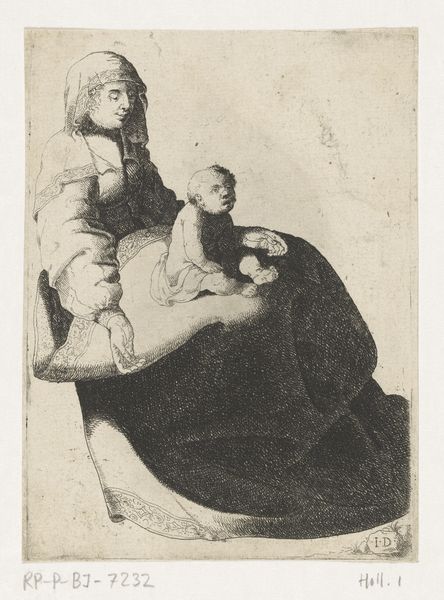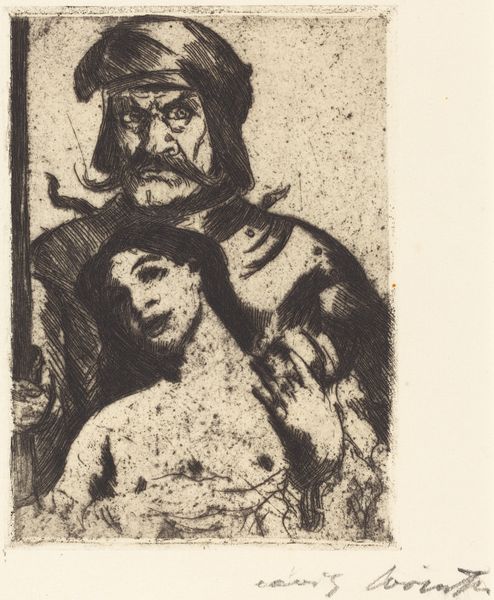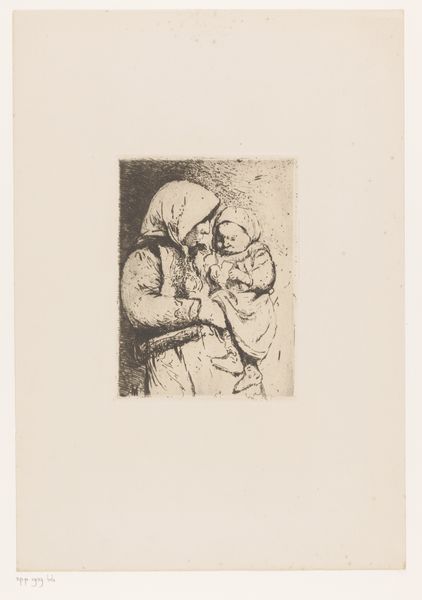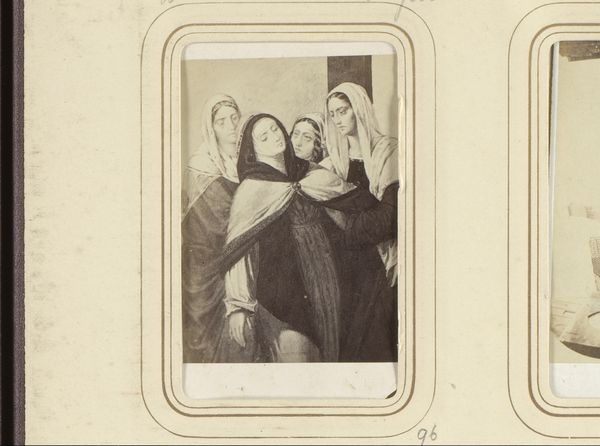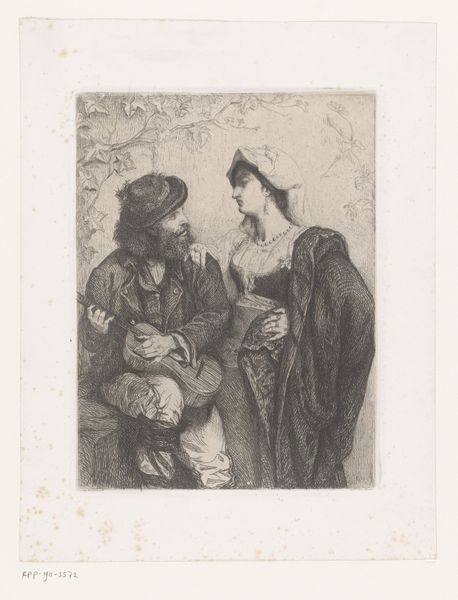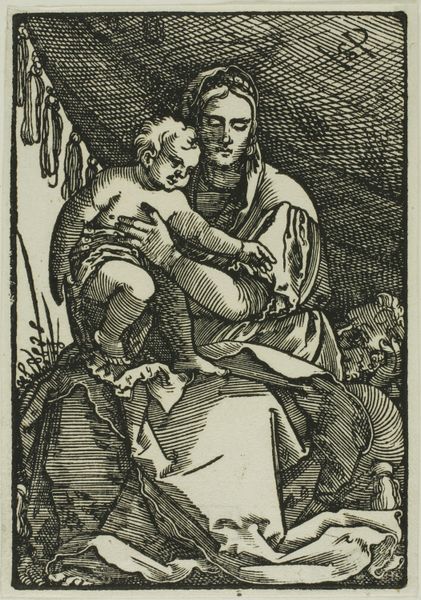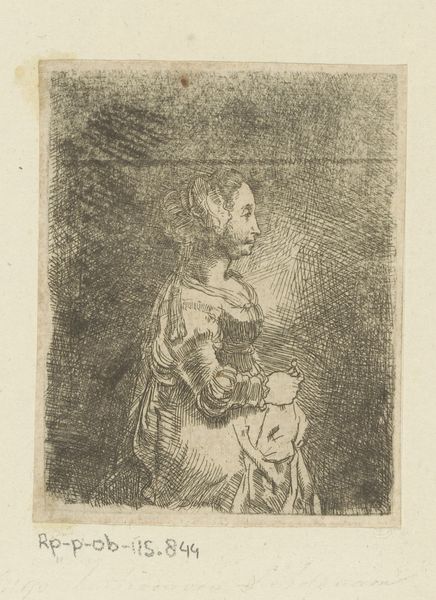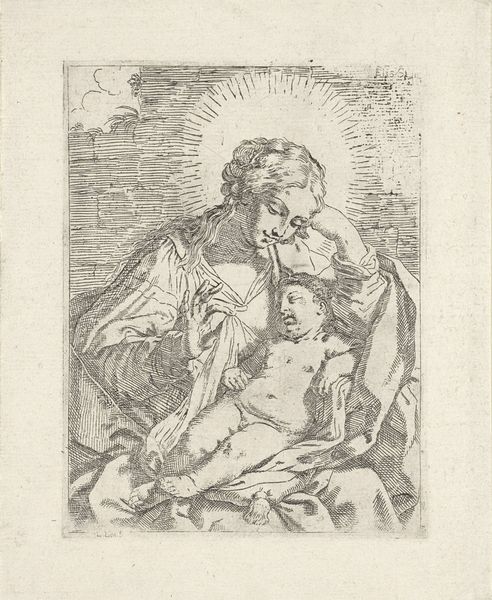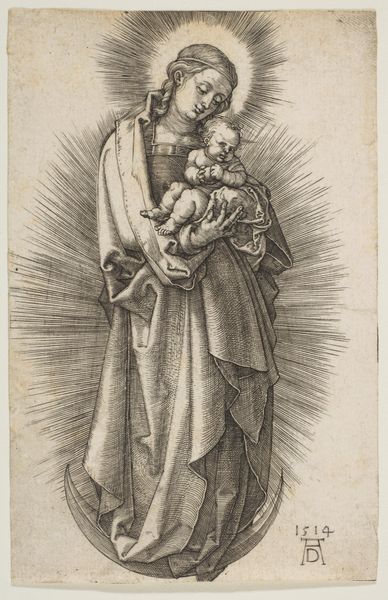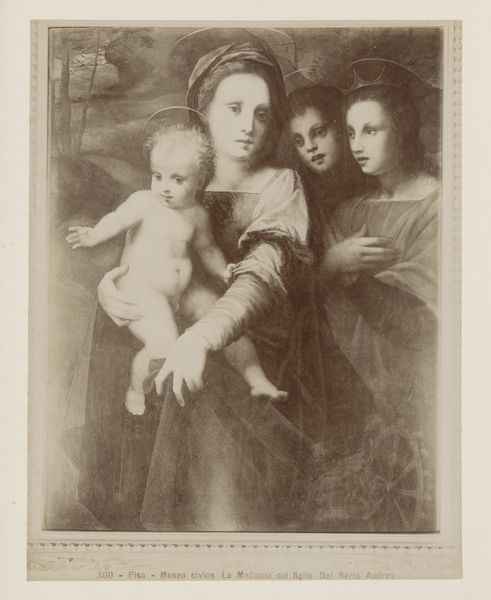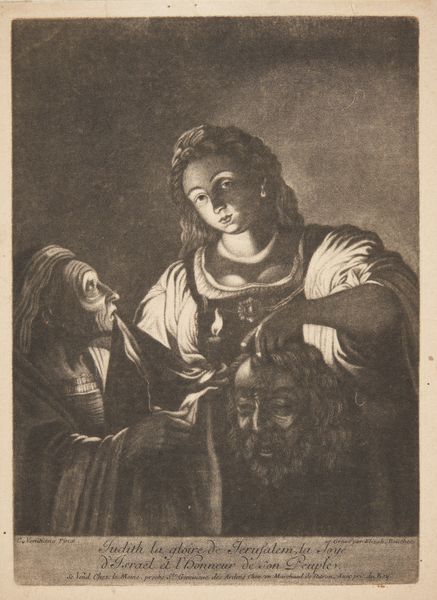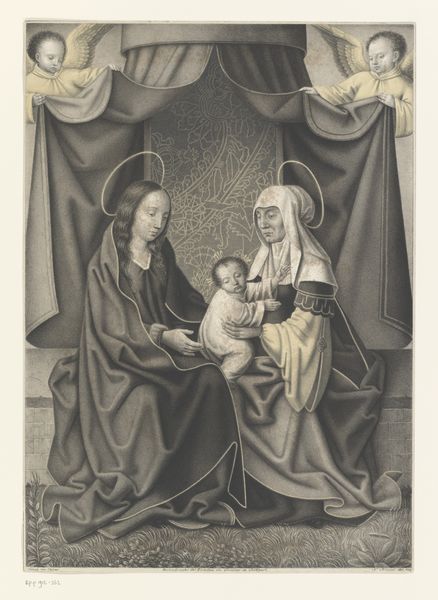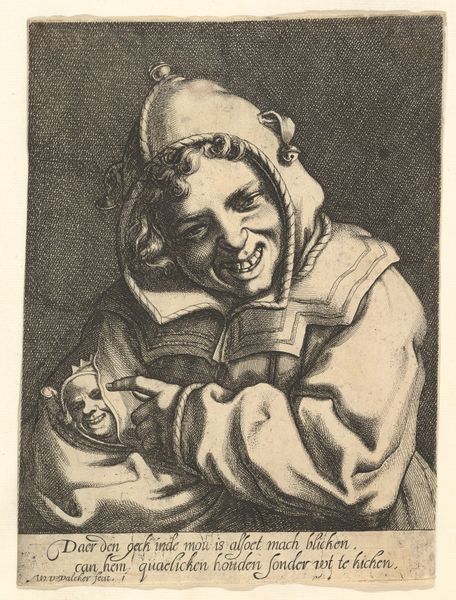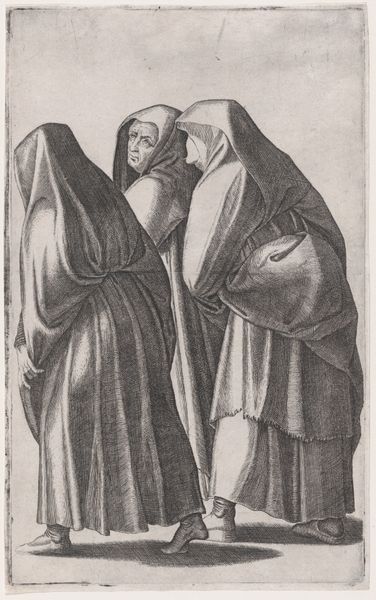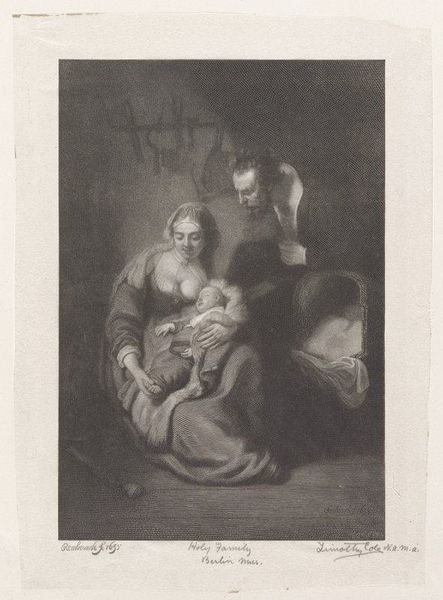
Portret van een paar als Oud-Testamentische figuren, genaamd 'Het Joodse bruidje' 1922
0:00
0:00
print, woodcut
#
portrait
# print
#
figuration
#
expressionism
#
woodcut
#
portrait drawing
Dimensions: height 309 mm, width 431 mm
Copyright: Rijks Museum: Open Domain
Editor: Standing here, you can see "Portrait of a Couple as Old Testament Figures, Called 'The Jewish Bride,'" a woodcut created in 1922 by Samuel Jessurun de Mesquita. The sharp contrast of black and white and the angular lines give it a somewhat somber and intense mood. What strikes you most about this piece? Curator: Well, let’s consider the title itself, laden as it is with art historical and cultural baggage. This romantic framing is, of course, complicated by Mesquita’s own biography as a Portuguese Jew murdered at Auschwitz. The Expressionistic style is hard to ignore here too. How might his own fraught cultural identity be read in relation to the dramatic portrayal of this couple as Old Testament figures? Editor: I see your point. The title seems almost romanticized, clashing with the artist's tragic history. The style emphasizes those tensions and makes me reconsider how easy labels like "romantic" or even "Jewish" were for people then. So how might the artwork challenge our perception of cultural identity in that era? Curator: It disrupts easy assumptions, doesn't it? Woodcuts, traditionally a "folk" medium and closely linked with German Expressionism, allow Mesquita to engage a historical and socio-political dialog on visibility and representation. Given that Mesquita was killed during the Holocaust, this work could function as an act of cultural preservation, defying erasure. It also prompts us to ask: Who has the right to represent whom, and how does that power dynamic play out historically? Editor: That adds a whole new layer. So the work's existence, the very fact it depicts Jewish figures, becomes an act of resistance against a system seeking to erase that identity. I hadn't considered the active role the work plays, it’s a powerful way to think about cultural context! Curator: Exactly! The intersection of personal identity, artistic expression, and socio-political context is key to understanding how Mesquita's woodcut actively participates in, and resists, historical narratives.
Comments
No comments
Be the first to comment and join the conversation on the ultimate creative platform.
